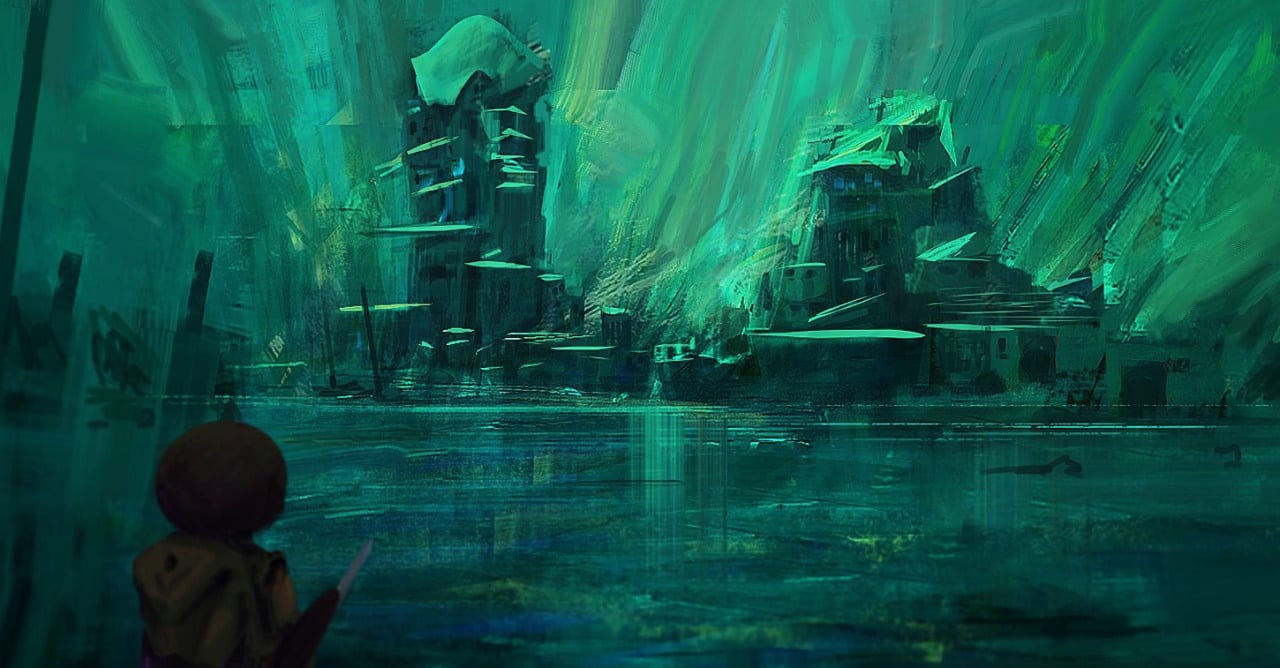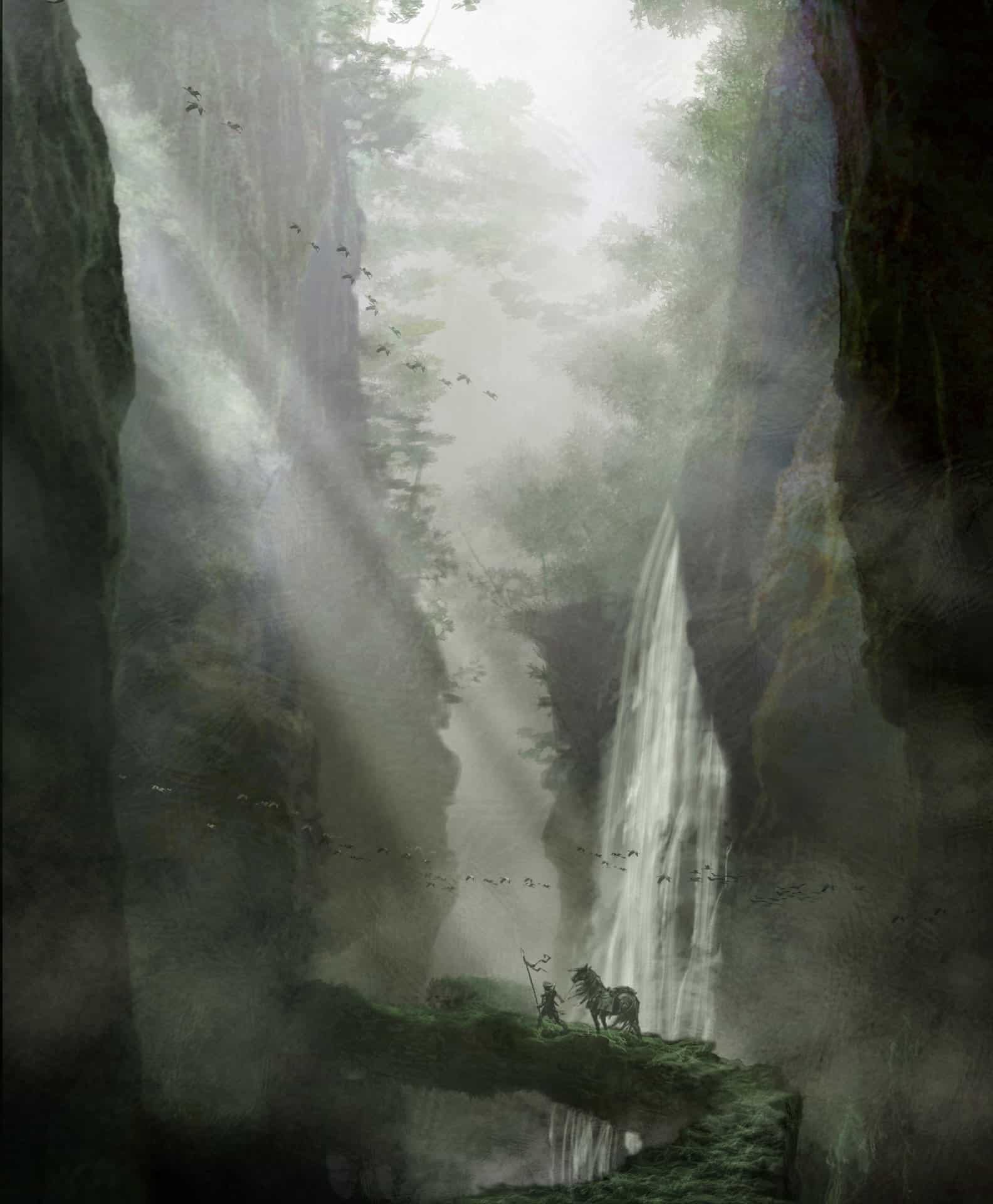If you're new to painting, chances are you possess a rough idea of what a Color Study is but have no clue on how to conduct one efficiently.

Doing a color study is an incredibly convenient way of getting a decent idea of what your final painting will look like, and is used by almost all professionals before they start a serious project. It allows you to play around with different colors without having to worry about things like pattern and accuracy.
While the concept seems quite simple and straightforward, learning how to do it properly takes a bit of learning and practice. So if you're someone that's looking to master this valuable skill and use it for your future projects, you've definitely clicked on the right article!
We've prepared a detailed guide on how you can perform a color study and explained almost every bit of information that might be relevant to your needs.
So let's get started!
What is a Color Study and How To Conduct One

Image via Gary Freeman
So What Really is a Color Study?
A Color Study is nothing but a rough painting or sketch that is used as a practice piece for testing out different color options before proceeding with any serious artwork. It's a pretty simple but highly convenient tool that can be used to test out and explore different color arrangements in order to get the most optimal color scheme for a painting.
A Color Study is conducted prior to any serious painting and is usually performed after preparing a thumbnail sketch. It allows an artist to play around with the color palette in order to get the perfect mood, light, and form that will eventually bring the best out of an artwork.
The underlying idea of a Color Study is to simplify the various elements of a painting and focus only on the color scheme so that the most dominant color arrangement is brought out. Elements such as edges, values, intricate drawing, brushwork, etc.are all watered down significantly while doing a color study.
The final result of a color study usually appears extremely rough and can be compared to that of a primitive cave painting, but it will most definitely give a clear idea about how the final color arrangement will look like once the actual painting is completed.
Why Do You Need to Conduct a Color Study?
Performing a Color Study before proceeding with an actual painting will save you a lot of time and hassle. Since you'll be having a rough visual representation of the final color scheme, it will be infinitely easier for you to follow through while doing the actual painting. This will significantly reduce your chances of messing things up and save you a great deal of time.
Irrespective of what medium you're painting, color studies are a must. Whether you're working with acrylic paints or painting on a digital medium, a color study will almost definitely make your job a lot easier.
Color Studies don't take much time so even if you mess one up or don't like a particular color arrangement, you can quickly move into the next one to try out a different arrangement. They are a great way to explore various moods and forms that you can produce in your artworks.
We've all been in those situations where we're midway through a painting, and we realize that the current color scheme isn't really working out. But changing the color arrangement of an artwork once it's half complete isn't really feasible.
You can very easily avoid such situations by merely conducting a color study as it will allow you to make decisions before you even start with a serious piece of work.
The color arrangement you select in your artwork can ultimately make all the difference. The color choices are what can differentiate an average painting from an unforgettable one. So making the right decisions are critical.
Simple alterations in the color scheme can entirely transform the mood and feel of a painting. So experimenting with different color options through a Color Study can help you get a clearer vision of the feeling you're trying to convey and then reproduce it more efficiently in your actual work.

How to Conduct a Color Study?
So now that you have a pretty clear idea of what a Color Study is and why it is so important to conduct one, we're going to move on to the actual process of performing a Color Study. Here are a few things you need to keep in mind while conducting a Color Study –
1. Be Quick and Relaxed
The whole point of doing a Color Study is to get a rough representation of the color scheme of a painting. So, it's okay to ignore the other aspects of a painting and simply focus on the color pattern.
Go for big and broad strokes irrespective of the medium you're working with and do not pay too much attention to detail. A Color Study should not take you a lot of time. It's supposed to be quick and easy.
If you're working on a digital medium, scaling up your brush size is a good idea. And for traditional mediums, use bigger brushes that you would use for your painting.
Including little patches of color on top of the study and labeling them can help you out a lot when you'll start with the actual painting.
Layering different colors are also advisable if you're working with any translucent medium. Make sure you perform a separate study for each layer you're going to use. This will not only allow you to keep track of the different colors you're using but also go a long way in identifying the areas where you want to make changes.
2. Pay Attention to Value
While you can safely ignore most other aspects of painting while doing a Color Study, make sure you do not entirely ignore the value.
While conducting a Color Study, try to choose the correct values for the colors that you're using. Otherwise, it's highly likely that you'll lose form and end up messing the entire study up.
3. Do Lots of Experimentation
Experimentation is yet another reason why color studies are conducted in the first place. So, do not be afraid to play around with different color schemes and take a lot of risks. Let your imagination run wild and try out completely different arrangements than the ones you initially had in mind. You never know what might end up clicking.
If you're going to use a reference image or even draw inspiration from real life for a piece of artwork, it's not necessary to stick to the original colors entirely. You're free to deviate from the original color arrangements try out different shades to see how they work.
Keep track of how the setting and mood changes with each study and see which one works out the best for you.
4. Do Multiple Color Studies
A lot of people make the mistake of doing just one Color Study and then jumping on to the main project. That defeats the whole purpose of a Color Study, which is to experiment and find out the color scheme that works out the best for you.
Make sure you do a minimum of three color studies before you start your main painting. Play around with different temperatures and palettes and experiment with different hues for the same composition.
You're also free to push the values to the extremes and go crazy with different shades. After all, a Color Study is just a rough image that doesn't have to be perfect.
Final Thoughts
Color Studies are an incredibly convenient way of saving time and experimenting with colors for any serious painting that you're planning on doing. They are a quick and easy way of reproducing the feeling and mood that you're trying to impart to painting and doing it efficiently.
With a little bit of practice, you can master this tool and use it to create any mood that you want in your paintings.
We hope you found this guide useful, and we wish you all the best!
